Women in the Independent Workforce – 2nd Annual Report, 2019
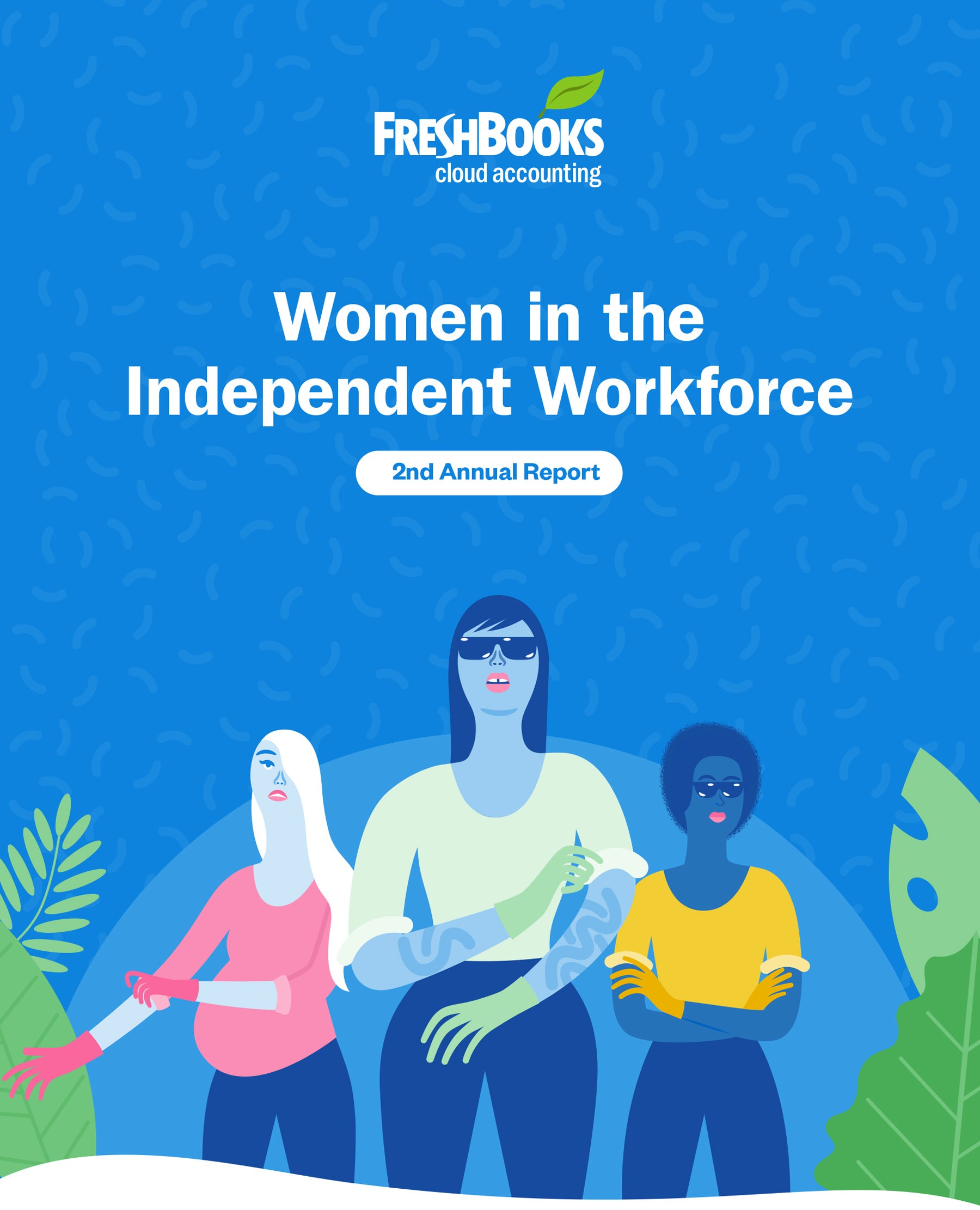
Summary
The world of work is undergoing profound and rapid change, as tens of millions of Americans are poised to explore self-employment in the next 2 to 5 years. Another important shift may also be underway – nearly half of this next wave of independent workers will be women.
For the majority, the allure of self-employment is more control over career and self-fulfillment. However, many women choose self-employment due to experiences with workplace gender discrimination and limitations like the glass ceiling. And while self-employed women are generally better off than they were as traditional employees, they continue to earn less than men who do the same work.
Key Findings in this report:
|
About the Study
Women in the Independent Workforce is the only study focused exclusively on the experiences of aspiring and currently self-employed women in America. FreshBooks launched the study in 2018 as a companion to its longer-running annual Self-Employment in America Report, an in-depth study of self-employment in America. In 2018, FreshBooks’ Women in the Independent Workforce Report surfaced for the first time, with concrete evidence, a significant earnings gap with self-employed women earning 28 percent less than self-employed men in America.
In this year’s report, we take our exploration of the self-employed gender earnings gap further, examining the gap within knowledge-based industries, and looking at regional differences across the U.S.
Women are poised to join the independent workforce in unprecedented numbers
Self-employment and small business ownership have long been dominated by men, who outnumber self-employed women by a 2:1 margin. FreshBooks’ customer data, representative of a diverse cross-section of the self-employed economy, shows that while the gender entrepreneurship gap narrowed earlier in the decade it’s been unchanged since 2017.
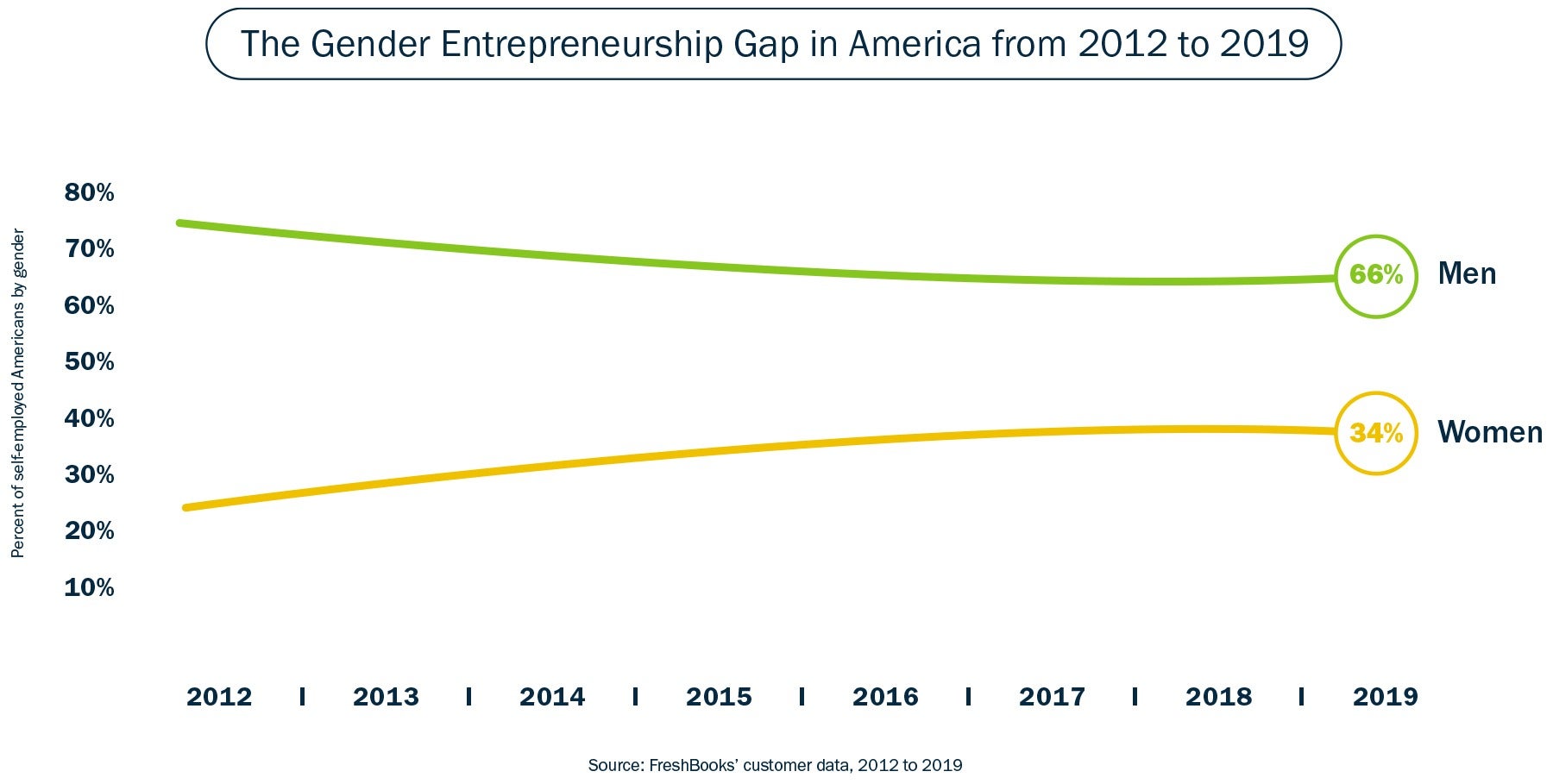
The world of self-employment is changing and women are leading the charge
It’s evident, change is on the horizon. As we first reported in 2017, and again last year, our research indicates that somewhere between 24 and 26 million Americans with full-time jobs are considering self-employment within the next two years. And, more than 2 in 5 of these would-be entrepreneurs are women.
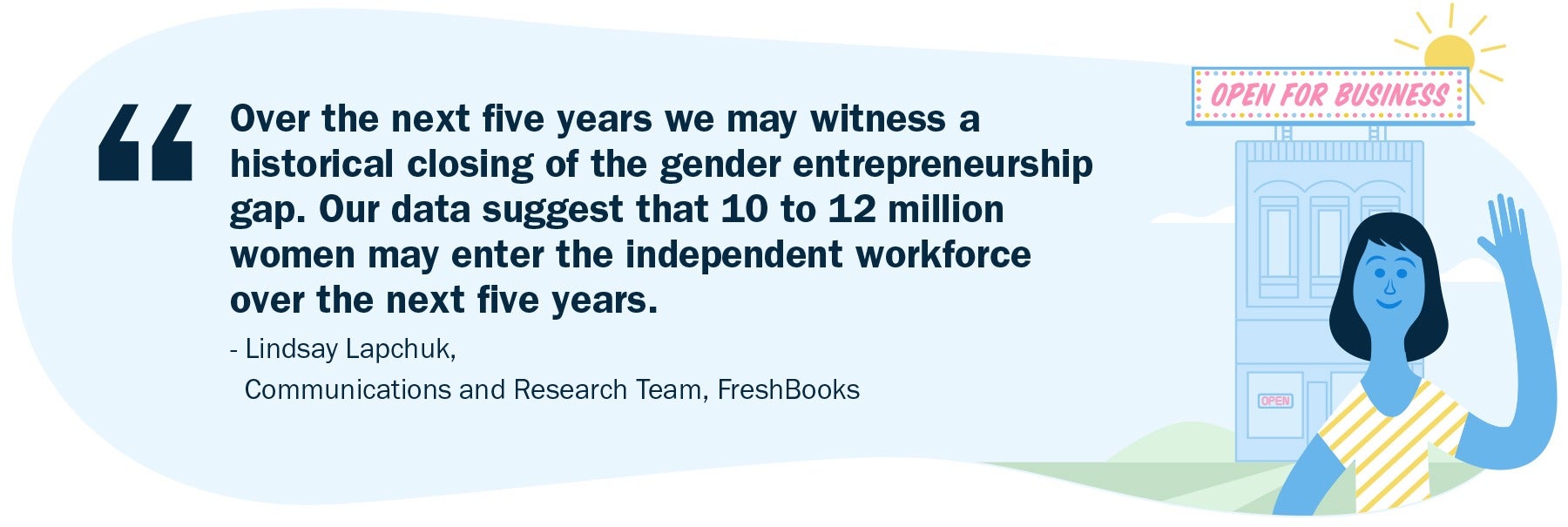
Better health and work-life balance are top reasons women pursue self-employment
Men and women are poised to explore career independence in close to equal proportions, and interestingly, both are doing so because they want vs. have to. On the specific motivations driving people toward self-employment, gender differences begin to emerge. When we asked current small business owners why they left traditional employment, both men and women cited a desire for career control. For women, career control is defined in terms of work and family balance or better health and less stress. Women are also somewhat less likely than men to be motivated primarily by career fulfillment or by money alone.
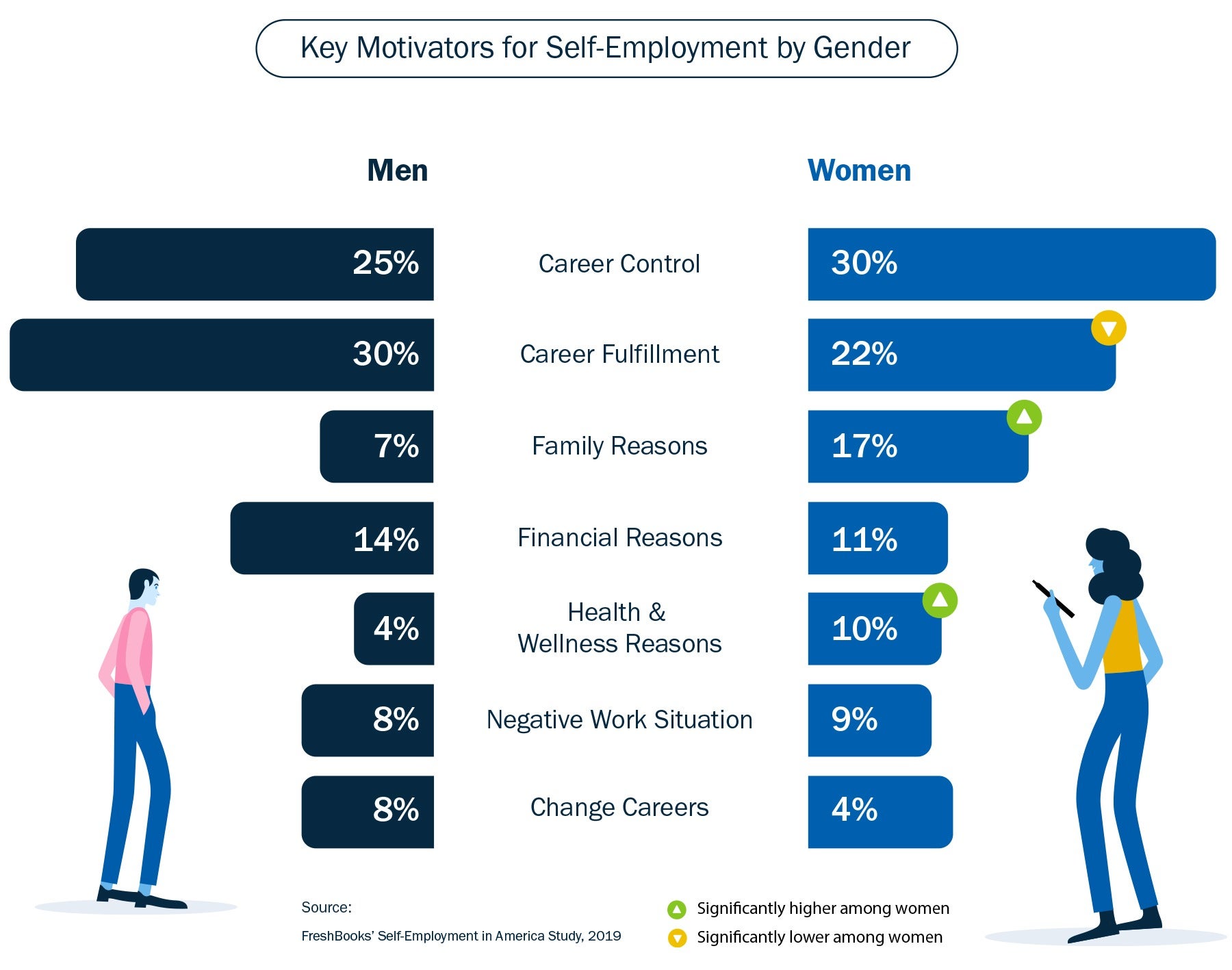
Money concerns top the list of barriers to self-employment for women
New to FreshBooks’ study this year is an examination of the barriers that prevent would-be entrepreneurs from taking the leap to self-employment. Women, like men, cite worries about the financial requirements and consequences of self-employment as their top blockers—finding cash to invest, paying down debt, and dealing with inconsistent income. Additionally, about 1 in 10 aspiring entrepreneurs, both women and men, are not making the move due to a lack of buy-in from their spouse or partner.
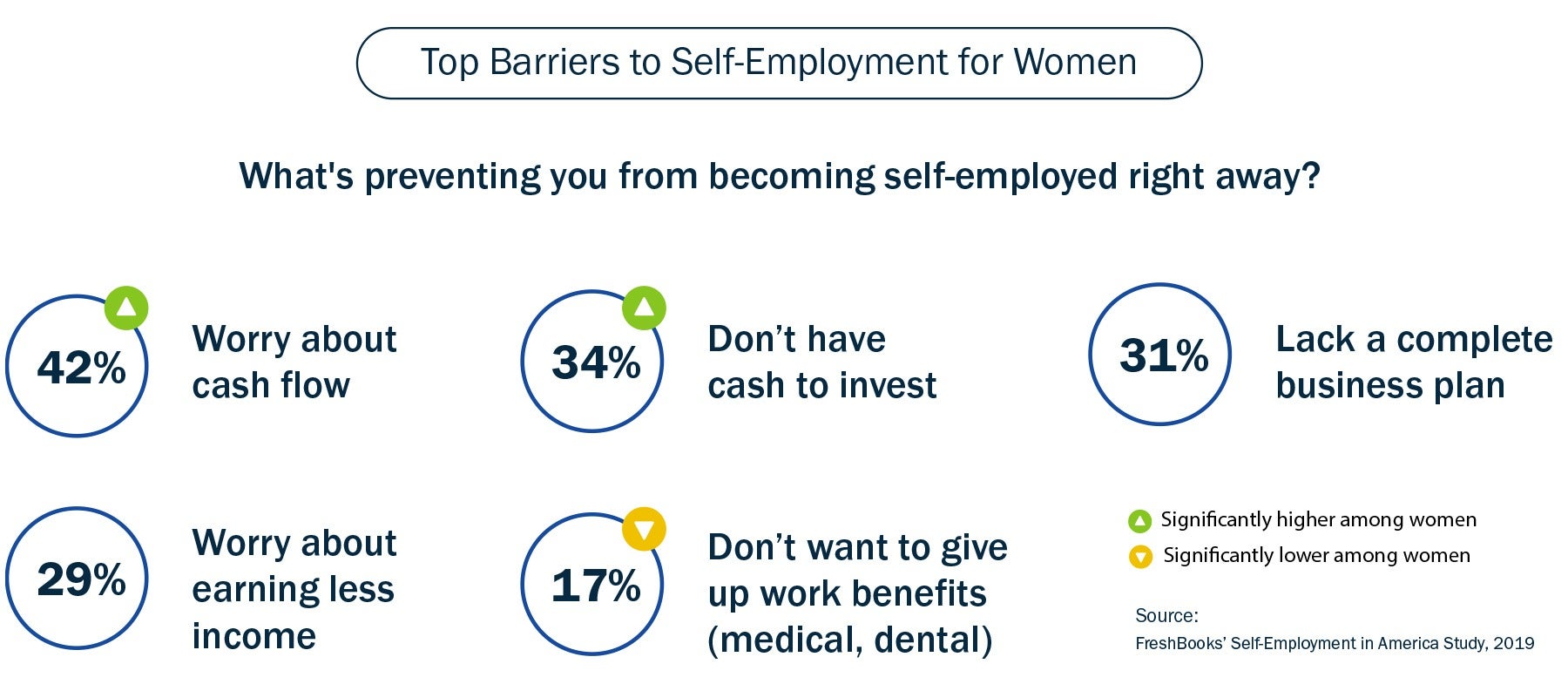
What’s not holding women back?
Women are less likely to be bound by company loyalty than men, with only 12 percent of women citing loyalty compared to 21 percent of men as a reason for not leaving their job. Women are also less likely than men to be tied to the social aspects of work, with only 5 percent of women worried about losing a sense of community vs. 10 percent of men.
Women aren’t looking back, the risks are worth the rewards
Generally speaking, for most women who work for themselves, the upsides of doing so are worth the effort required to get there. The majority of self-employed women report they have less stress, better health, and enjoy better work-life balance. Two-thirds make as much if not more money than they did before working for themselves. Although the majority of women say they now have to work harder to succeed (55 percent) than when traditionally employed, at the end of the day, women who work for themselves are deeply satisfied and only 4 percent would consider returning to a regular job.
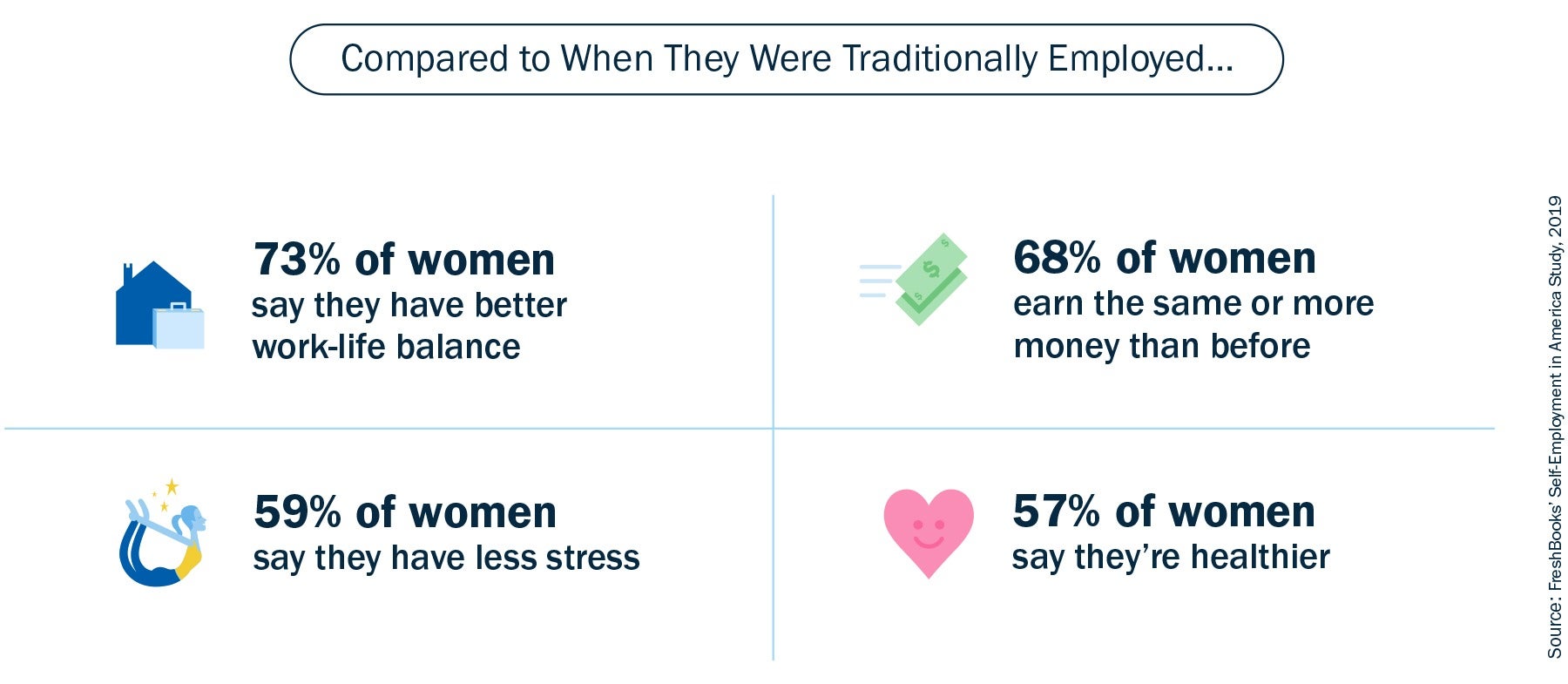
Defining success: Self-employed women and men have similar goals
No aspiration gap here. The majority of self-employed women aspire to grow their revenue, with slightly less interest from women in growing their business through headcount.
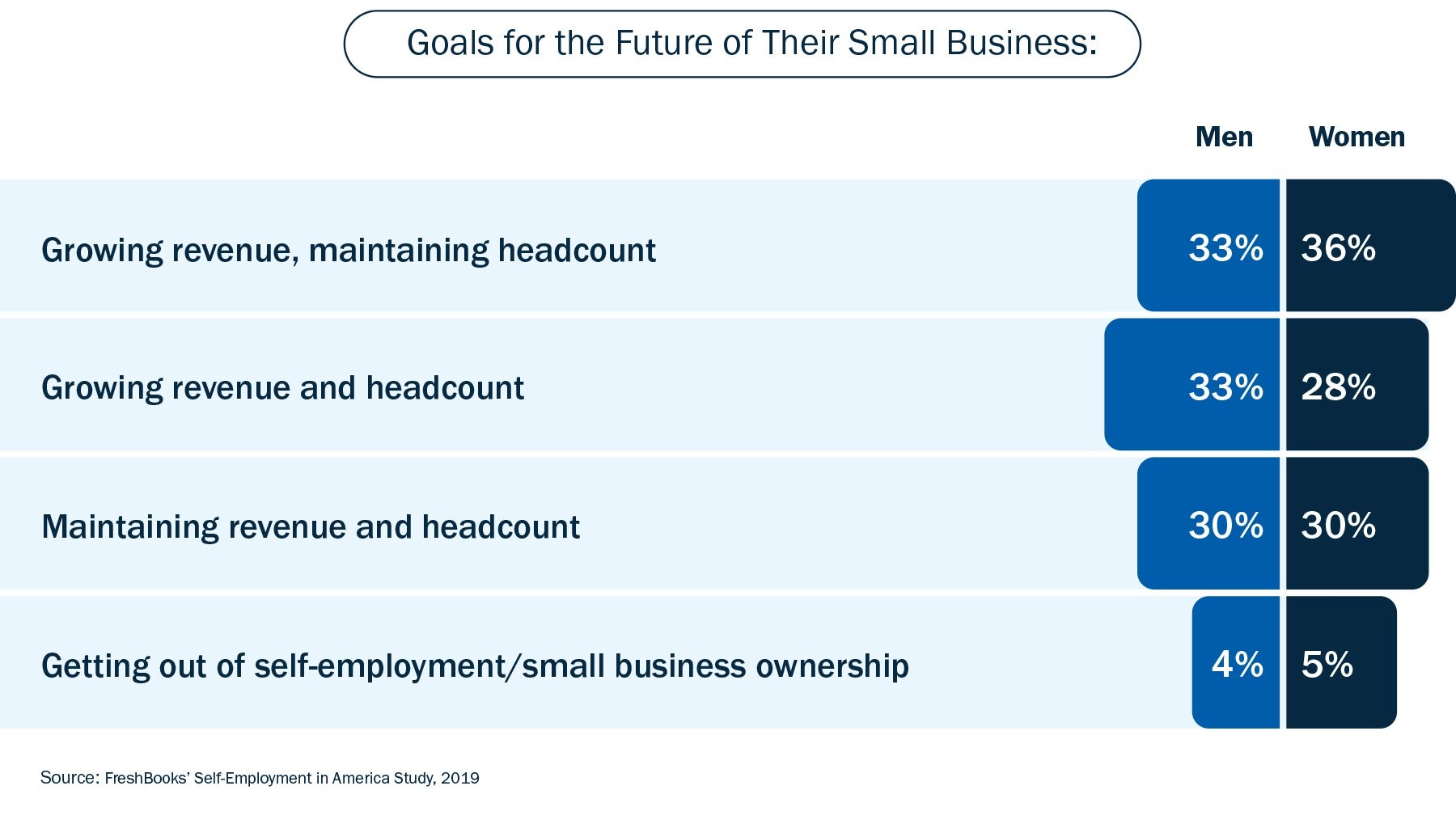
No, gender discrimination hasn’t gone anywhere
As first observed in 2018, and confirmed again in 2019, the majority of women who start their own businesses leave traditional employment behind at least in part due to gender discrimination. One in ten—or roughly half a million—women chose self-employment because they experienced explicit gender discrimination in the workplace. Many more bumped up against the glass ceiling and felt their careers were not advancing quickly enough because of their gender. The majority of currently self-employed women (55 percent) left their jobs because they felt they could advance their careers faster on their own.
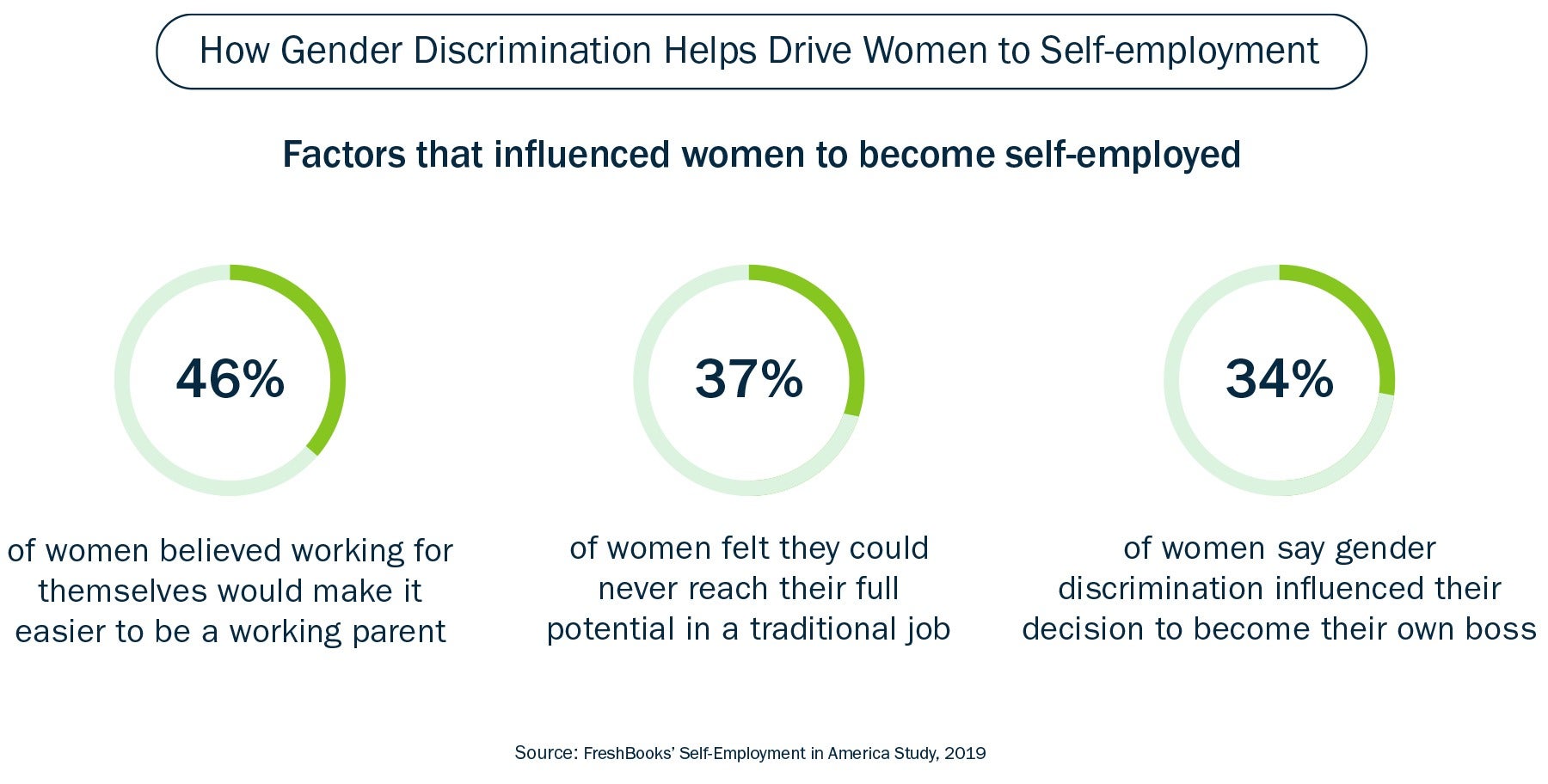
Sadly, the cure for gender discrimination isn’t self-employment
Gender discrimination doesn’t disappear once women become business owners. Rather, it manifests in slightly different ways. For example, one in three self-employed women feel they need to work harder than self-employed men in order to succeed. Interestingly, even one in three men agree this is the case for women. The majority of self-employed women (61 percent) also say they are not taken as seriously by their clients.
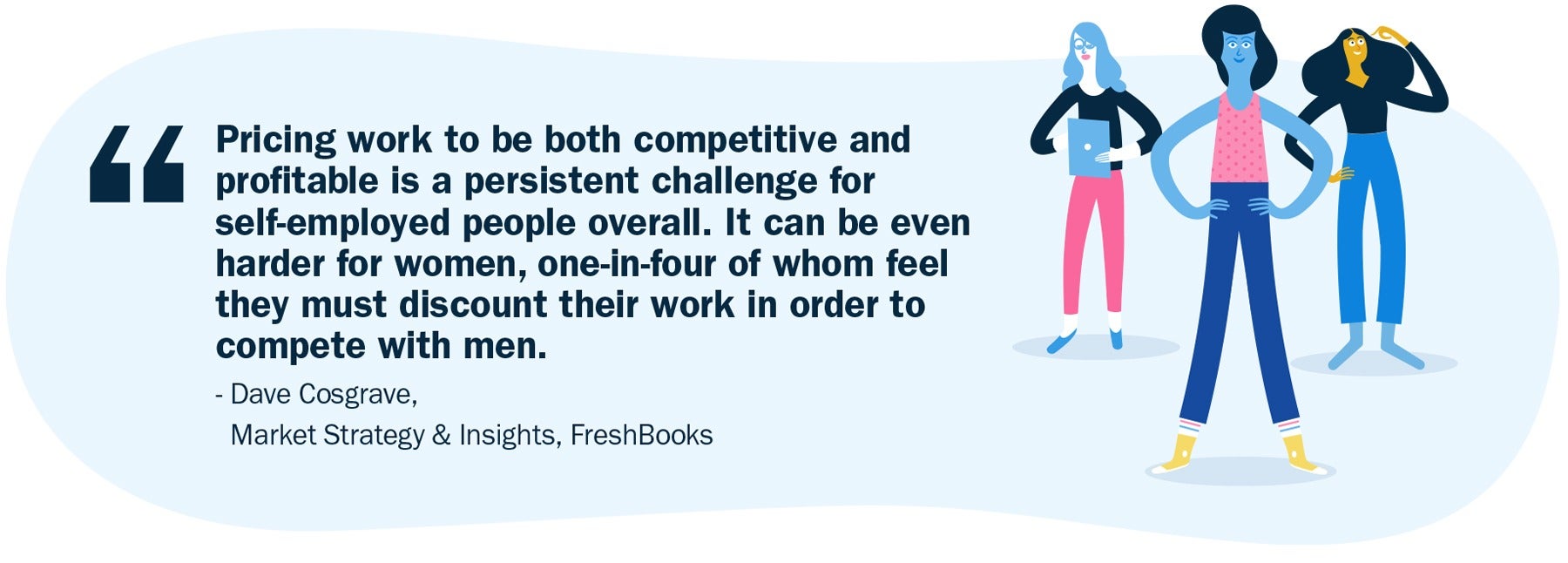
The earnings gap lingers for self-employed women
In 2018, FreshBooks provided the first concrete evidence of an earnings gap between self-employed women and men essentially providing the same services. Astoundingly, the gap was 28 percent even when controlling for industry, business size, and other factors. Our 2019 data show that 25 percent of self-employed women believe they have to charge less than self-employed men to attract and retain clients.
For this year’s report, we’ve taken our exploration one step further to shine a light on what might really be going on. Commonly cited objections to wage gap data, from traditional employment, stem from data that does not compare “apples to apples.” Arguments include that men choose higher-paying or more dangerous work and that men are more likely to work in isolation or undesirable locations. This year, in addition to controlling for location, business size, and industry, we’ve chosen to focus exclusively on knowledge-based industries to remove these inconsistencies in data collection.
Looking back over the past five years at the revenue of men vs. women-led knowledge-based businesses in the U.S., we see a substantial and persistent gap of about 14 percent to 19 percent.
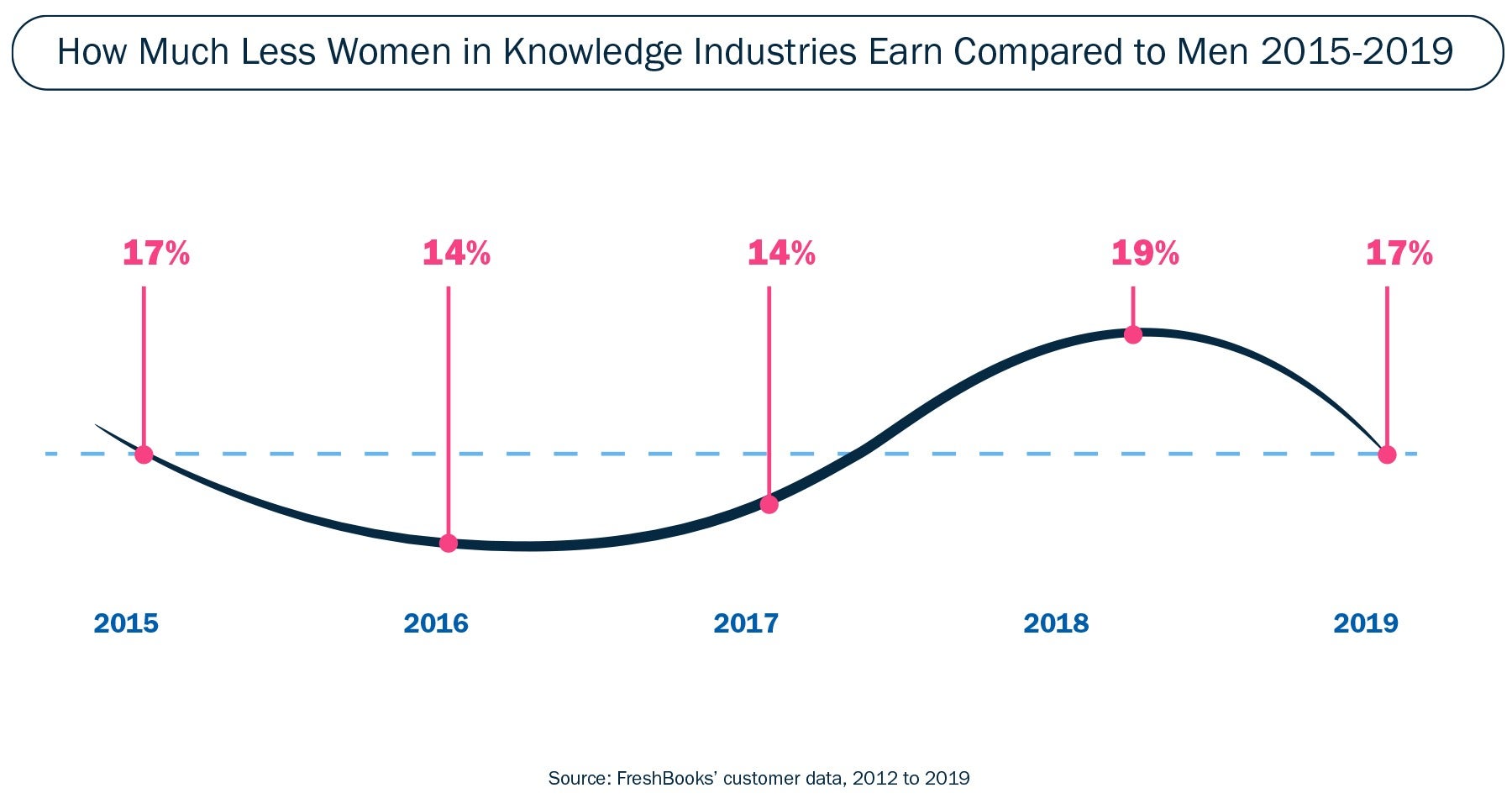
So, does the earnings gap blanket the U.S.?
Turns out, if you’re a self-employed woman in a knowledge industry, you’re better off in certain states than in others. In our analysis comparing the 10 most populous states, we see a gap ranging from 16 percent to 23 percent. Georgia has the highest earnings gap at 23 percent, with Texas, Florida, New York, and California trailing just behind with a 22 percent gap. Of the 10 states analyzed, Michigan came in under the national average (17 percent) with a 16 percent gap.
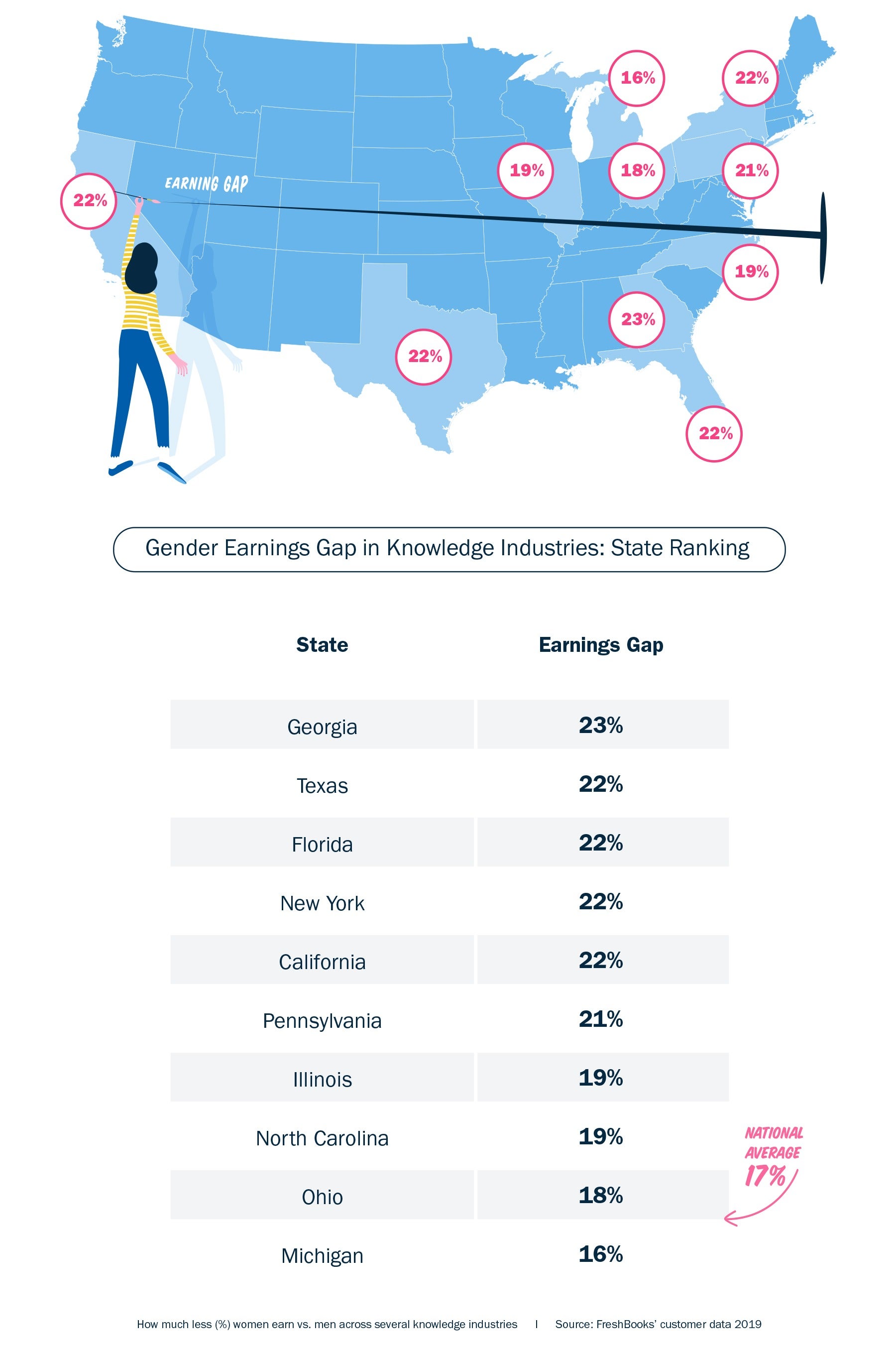
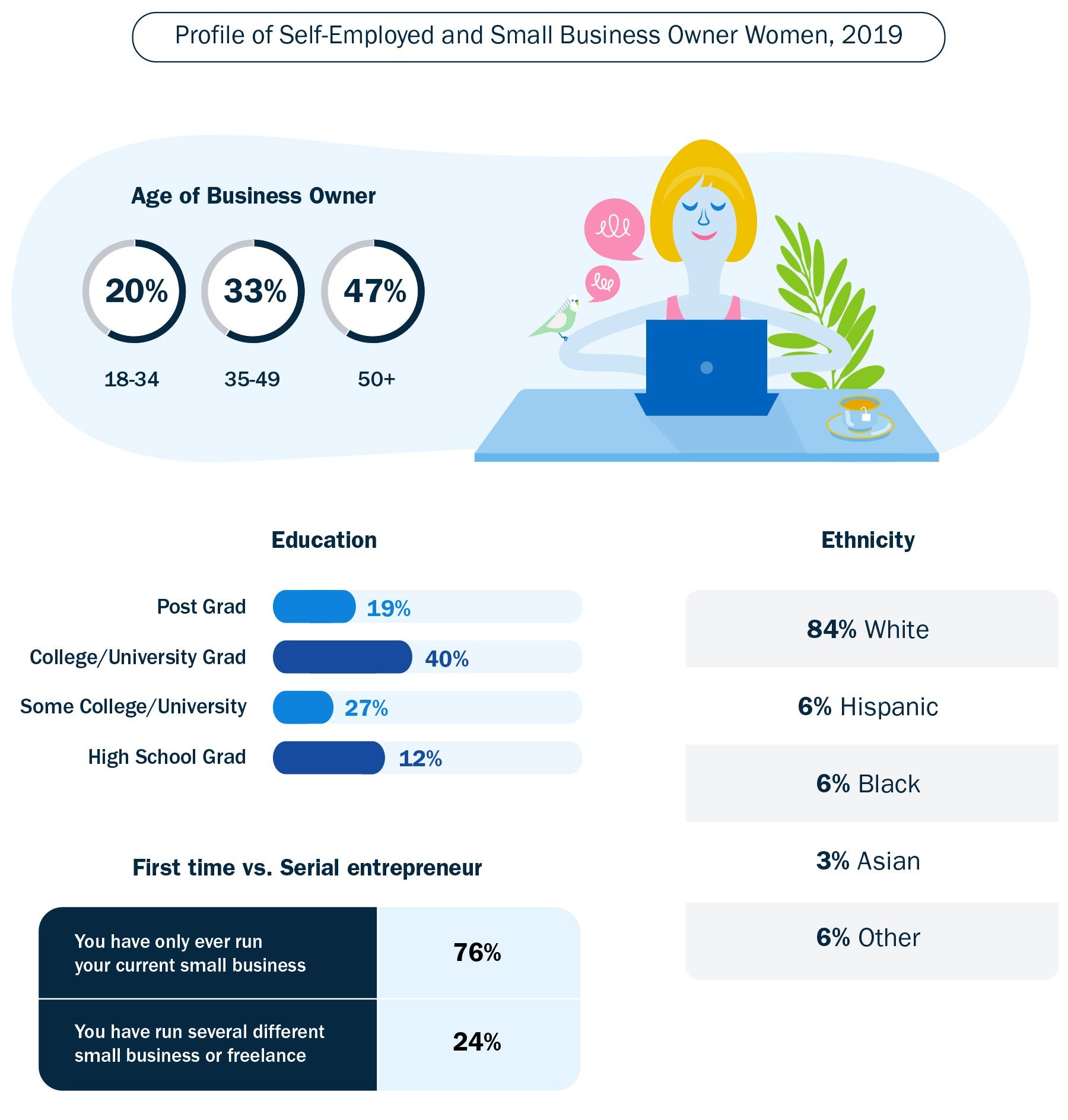
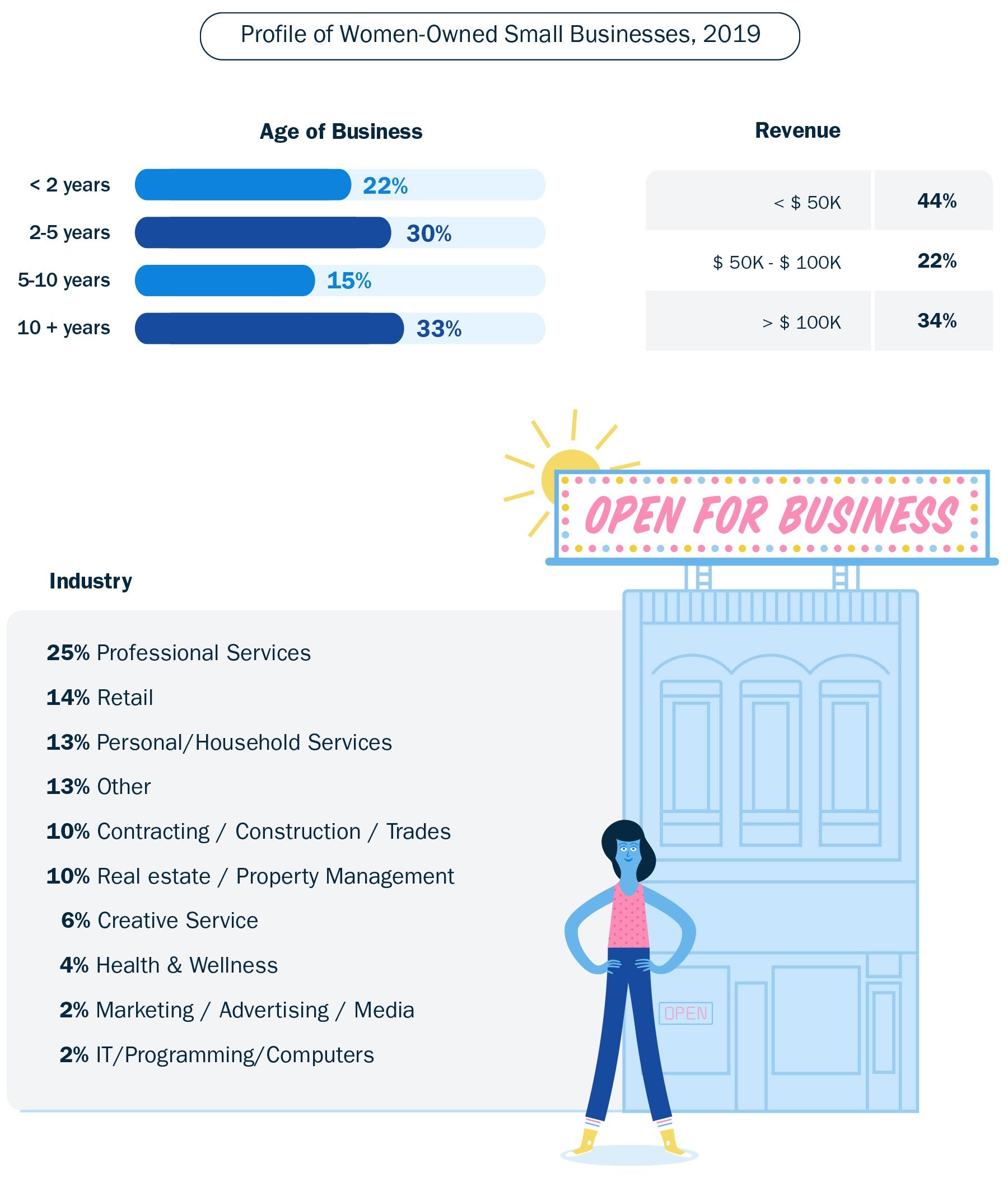
This research was conducted by FreshBooks in conjunction with market research provider Dynata. For more information please contact the FreshBooks research and communications team research@freshbooks.com
Survey Methodology: FreshBooks conducted this study in collaboration with leading market research provider Dynata. More than 1,500 women who work full-time—either as traditional employees, independent professionals or small business owners—were surveyed online in November of 2018. Samples have been weighted (as required) to reflect various characteristics of their target populations (e.g., age, gender, and industry) leveraging data from the U.S. Census, U.S. Small Business Administration, the NAICS Association, and other sources. The study’s margin of error is approximately +/- 4% at 95% confidence.
The FreshBooks data science team analyzed a sample of 17,000 user accounts to determine median annual earnings, controlling for industry, business size, gender, and location. The research was focused on knowledge-based industries across the U.S., including a focused analysis of the 10 most populous states. The industries include:
|
|
The team made assumptions about users’ gender by analyzing users’ first names and predicting gendered cultural associations. The team also made assumptions about users’ gender and biological sex identification. While FreshBooks doesn’t collect demographic data, the team recognizes that an intersectional approach to this research would provide a deeper and more complex understanding of the earnings gap across a range of dimensions of diversity.
About: FreshBooks is the #2 small business accounting software in America, with paying customers in 160 countries. The company has helped more than 30 million people process billions of dollars through its easy-to-use invoicing, time-tracking, expense management and online payments features. Recognized with nine Stevie awards for best customer service in the world, the company’s mantra is to “execute extraordinary experiences everyday.” FreshBooks is headquartered in Toronto, Canada, with offices in Raleigh, North Carolina and Amsterdam, Netherlands.

Share: